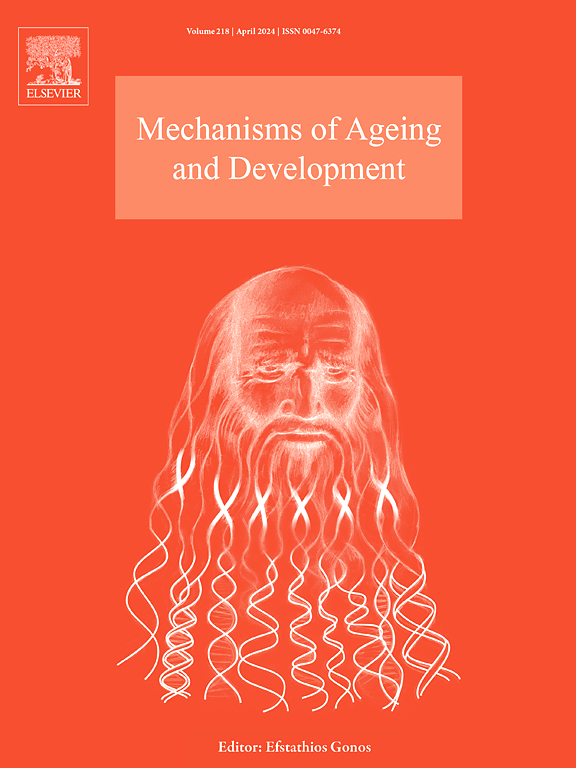Mangiferin protects mesenchymal stem cells against DNA damage and cellular aging via SIRT1 activation
IF 5.1
3区 医学
Q2 CELL BIOLOGY
引用次数: 0
Abstract
The protective effects of mangiferin (MAG) against etoposide- and high glucose (HG)–induced DNA damage and aging were investigated in human bone marrow-mesenchymal stem cells (hBM-MSCs). Etoposide, a topoisomerase II inhibitor, was used to induce double-strand breaks (DSBs) in hBM-MSCs, resulting in increased genotoxicity, elevated levels of the DNA damage sensor ATM and CDKN1A, and decreased levels of the aging markers H3 and H4. MAG activated AMPK and SIRT1, thus protecting against DSB-induced damage. Following long-term exposure to HG, MAG significantly mitigated DNA damage and delayed cellular aging, as evidenced by the preservation of H3, H4, LMNB1, and SIRT1 mRNA levels and reduction in γ-H2AX foci and DSBs. Furthermore, MAG improved genome stability, as indicated by decreased LINE1 expression and increased levels of the heterochromatin marker TRIM28, thereby maintaining H3K9me3 levels. MAG and metformin treatment enhanced cell proliferation, reduced senescence-associated β-galactosidase staining, and lowered the levels of the senescence-associated secretory phenotype factors IL-1A, IL-1B, IL-6, IL-8, CCL2, and CCL20 and senescence marker CDKN1A, CDKN2A and p53. MAG may reduce DNA damage and delay aging in hBM-MSCs under HG conditions, highlighting their potential as therapeutic agents for aging-related diseases.
芒果苷通过激活SIRT1保护间充质干细胞免受DNA损伤和细胞衰老。
研究了芒果苷(MAG)对人骨骨髓间充质干细胞(hBM-MSCs) DNA损伤和衰老的保护作用。依托oposide是一种拓扑异构酶II抑制剂,用于诱导hBM-MSCs中的双链断裂(DSBs),导致遗传毒性增加,DNA损伤传感器ATM和CDKN1A水平升高,衰老标志物H3和H4水平降低。MAG激活AMPK和SIRT1,从而防止dsb引起的损伤。长期暴露于HG后,MAG显著减轻了DNA损伤并延缓了细胞衰老,这可以通过保存H3、H4、LMNB1和SIRT1 mRNA水平以及减少γ-H2AX灶和dsb来证明。此外,MAG提高了基因组的稳定性,如LINE1表达降低和异染色质标记TRIM28水平升高所表明的,从而维持了H3K9me3水平。MAG和二甲双胍处理增强细胞增殖,降低衰老相关β-半乳糖苷酶染色,降低衰老相关分泌表型因子IL-1A、IL-1B、IL-6、IL-8、CCL2和CCL20以及衰老标志物CDKN1A、CDKN2A和p53的水平。MAG可能减少HG条件下hBM-MSCs的DNA损伤和延缓衰老,突出其作为衰老相关疾病治疗剂的潜力。
本文章由计算机程序翻译,如有差异,请以英文原文为准。
求助全文
约1分钟内获得全文
求助全文
来源期刊
CiteScore
11.10
自引率
1.90%
发文量
79
审稿时长
32 days
期刊介绍:
Mechanisms of Ageing and Development is a multidisciplinary journal aimed at revealing the molecular, biochemical and biological mechanisms that underlie the processes of aging and development in various species as well as of age-associated diseases. Emphasis is placed on investigations that delineate the contribution of macromolecular damage and cytotoxicity, genetic programs, epigenetics and genetic instability, mitochondrial function, alterations of metabolism and innovative anti-aging approaches. For all of the mentioned studies it is necessary to address the underlying mechanisms.
Mechanisms of Ageing and Development publishes original research, review and mini-review articles. The journal also publishes Special Issues that focus on emerging research areas. Special issues may include all types of articles following peered review. Proposals should be sent directly to the Editor-in-Chief.

 求助内容:
求助内容: 应助结果提醒方式:
应助结果提醒方式:


